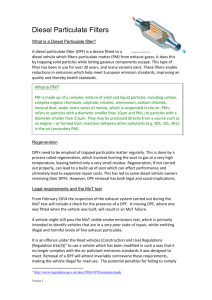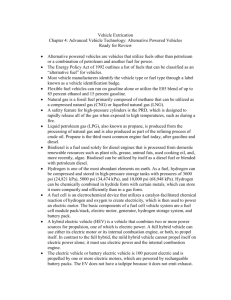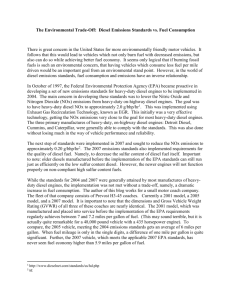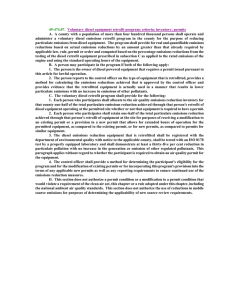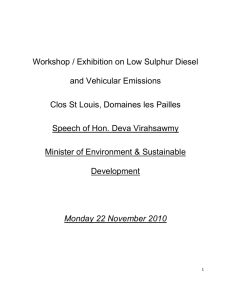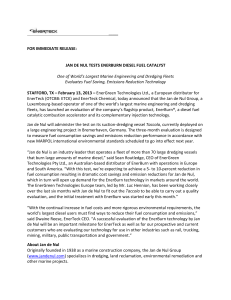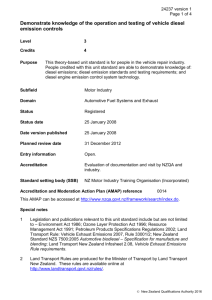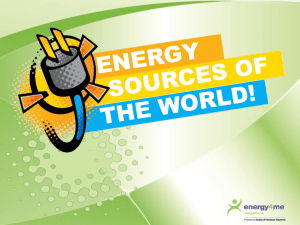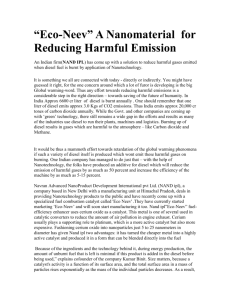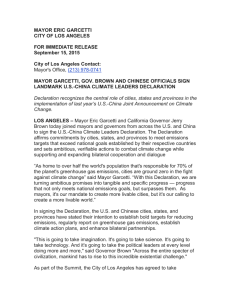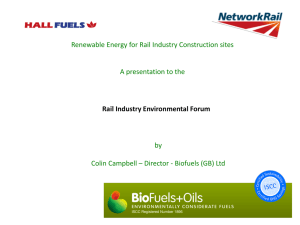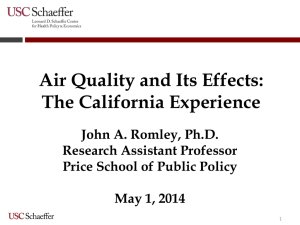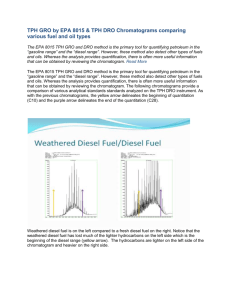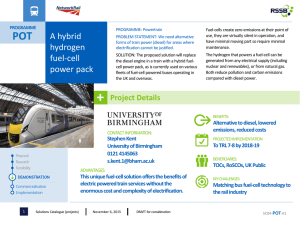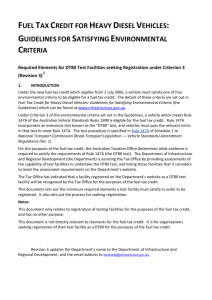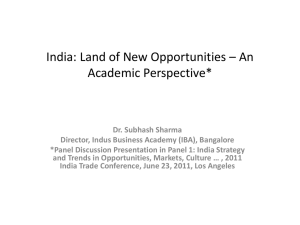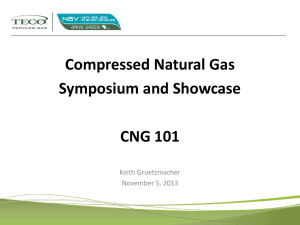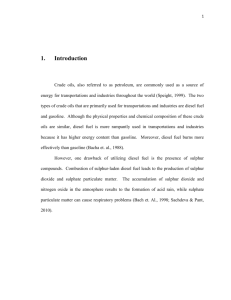Mitigating Air Pollution: Overview - A. Lloyd
advertisement
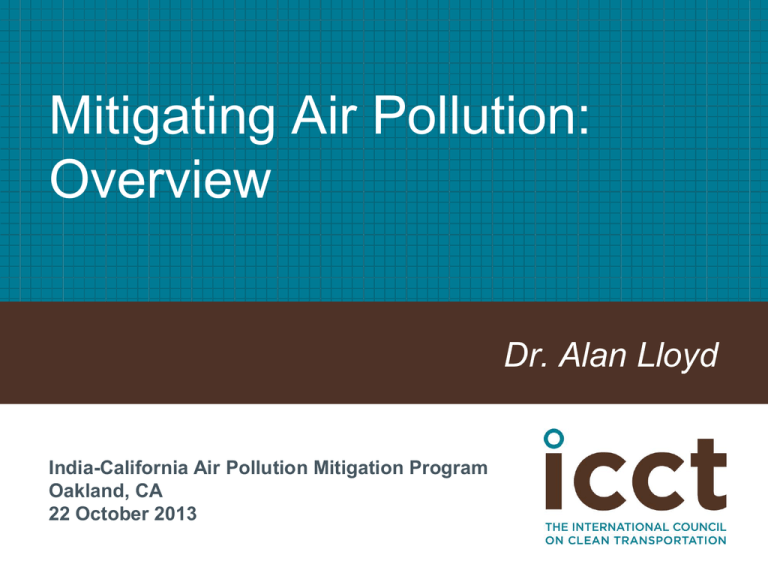
Mitigating Air Pollution: Overview Dr. Alan Lloyd India-California Air Pollution Mitigation Program Oakland, CA 22 October 2013 Los Angeles: October 1968 Slide 2 Examiner Collection photo courtesy of The Los Angeles Public Library Overview: What has worked in California Slide 3 Strong public health interest Strong research base Strong civil society interest Technology-forcing standards Strong Public Push for Clean Air Slide 4 Health Effects Children’s Health Study Los Angeles Field Studies Crop damage Visibility Property damage Strong Public Research Interest Slide 5 Key Institutions CalTech Stanford University University of California USC Cal State Universities National labs Strong Government Research Programs ARB Research Division OEHHA Strong Civil Society Interest Slide 6 American Lung Association: Annual State of the Air Report Diesel Toxicity Finding Slide 7 OEHHA Risk Assessment 1998: California Air Resources Board classified diesel particulate matter as a toxic air contaminant ARB Risk Management 2000: Diesel Risk Reduction Plan California Air Resources Board: Particulate Emissions from Diesel-Fueled Engines as a Toxic Air Contaminant. http://www.arb.ca.gov/toxics/dieseltac/dieseltac.htm Major Shifts in Technologies Slide 8 Comparison of Diesel Ret ro t Technology Technological Strategies for BC Control NoRetro t System Retro ttedwith Retro ttedwith Retro ttedwith UncontrolledDiesel Exhaust Diesel OxidationCatalyst (DOC) Partial Filter Diesel ParticulateFilter (DPF) (Level 1) (Level 2) (Level 3) Oldtechnology Littleblackcarbonremoval Littleutra nePMremoval Doesnot removelubeoil ash Littleblackcarbonremoval Littleutra nePMremoval Doesnot removelubeoil ash Newtechnology Usedonall newtruckssince2007 >85%blackcarbonremoval >85%ultra neremoval >85%lubeoil ashremoval Overview: The exhibits above are actual PM collection samples from an engine testing laboratory used to collect and measure diesel particulate matter (PM) emissions. Test conditions are: • • • • • Test Cycle: UDDS (Urban Dynamometer Driving Schedule) Test Distance: 5.5 miles over 17 minutes Fuel Consumed During Test: 1.1 gallons Test Vehicle: Heavy-duty truck with a 370 hp Cummins engine (1999 model year) PM material on collection samples is 1/1,800th of actual Risk of Cancer in Los Angeles from Diesels (2005) http://www.nytimes.com/imagepages/2005/08/02/national/20050803_angeles.html Slide 9 Diesel Particulate Matter in Los Angeles Slide 10 Performance-Based Standards Slide 11 Standards forced fuel-neutral changes in technologies Improvements in Nitrogen Oxides Slide 12 Tre n d s in P a s s e n g e r C a r E x h a u s t E m is s io n s S ta n d a rd s NOx Emissions Standards Grams/Kilometer 3.5 USA EU China Beijing 3 2.5 2 1.5 1 0.5 0 1973 1976 1979 1982 1985 1988 1991 1994 1997 2000 2003 2006 2009 What still needs improvement in California Slide 13 Links between land use planning and vehicle emissions Strategies that shift human behavior toward efficient travel Investments in non-motorized transport Investments in public transport Etc. Comparison of passenger vehicle fuel economy standards GRAMS CO2 PER KILOMETER NORMALIZED TO NEDC TEST CYCLE 270 Slide 14 Solid dots and lines: historical performance Solid dots and dashed lines: enacted targets Solid dots and dotted lines: proposed targets Hollow dots and dotted lines: unannounced proposal 250 US-LDV California-LDV Canada-LDV EU 230 Japan 210 China S. Korea 190 Australia 170 150 India 130 China 2020: 117 110 90 2000 US 2025:107 Japan 2020: 105 EU 2020: 95 2005 2010 2015 2020 2025 [1] China's target reflects gasoline fleet scenario. If including other fuel types, the target will be lower. [2] US and Canada light-duty vehicles include light-commercial vehicles. http://www.theicct.org/passenger-vehicles/global-pv-standards-update/ Developing Regions will Experience Large Growth in Health Risk From Vehicle Emissions Slide 15 International Council on Clean Transportation (2013). The Impact of Stringent Fuel and Vehicle Standards on Premature Mortality and Emissions. In Press. Accelerated adoption of fuel/vehicle standards will Protect Future Health Gains Slide 16 International Council on Clean Transportation (2013). The Impact of Stringent Fuel and Vehicle Standards on Premature Mortality and Emissions. In Press. Cleaner Air and Economic Growth Slide 17 Suggestions for India Going Forward Slide 18 Policies based on sound science Systems approach works Monitor ambient air Ability to recall vehicles and enforce fuel quality standards Legal framework should exist for implementing regulations Judicial framework should exist for citizen lawsuits See ICCT India Retrospective Report http://www.theicct.org Slide 19 Thank You
